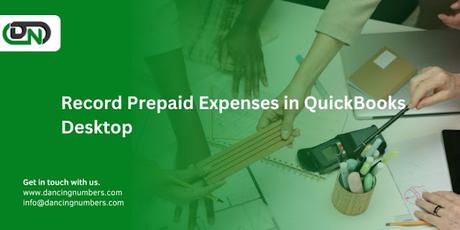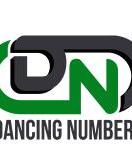Prepaid expenses are a common aspect of business accounting, representing payments made for goods or services that will be received in the future. These expenses are recorded as assets until they are incurred, at which point they are moved to the expenses section in your financial reports. Managing prepaid expenses accurately is essential for ensuring that your financial records reflect the true state of your business.

In QuickBooks Desktop, recording prepaid expenses involves specific steps to ensure that these payments are tracked correctly over time. This blog will provide a comprehensive guide on how to record prepaid expenses in QuickBooks Desktop, ensuring accuracy in your financial reporting.
What Are Prepaid Expenses?
Prepaid expenses are payments made in advance for goods or services that your business will use in the future. Common examples of prepaid expenses include:
- Insurance premiums paid in advance for the next quarter or year.
- Rent for office space paid ahead of time.
- Subscriptions to software or services.
- Maintenance contracts for equipment.
These payments are considered assets at the time of payment because they provide future economic benefits to your business. Over time, as the benefits are realized, these prepaid expenses are expensed on your income statement.
Why It's Important to Record Prepaid Expenses Accurately
Accurate recording of prepaid expenses is crucial for maintaining the integrity of your financial statements. If you don’t handle prepaid expenses correctly, you might overstate your expenses in one period and understate them in another. This can lead to inaccurate financial reporting and tax filings, which can result in penalties or misguided business decisions.
QuickBooks Desktop allows you to accurately track prepaid expenses and systematically move them to the expense accounts as they are incurred. Here's how to do it.
Step-by-Step Guide to Recording Prepaid Expenses in QuickBooks Desktop
Step 1: Create a Prepaid Expense Account
The first step in recording prepaid expenses in QuickBooks Desktop is to create a separate asset account to track these payments. This account will hold the prepaid amounts until the services or goods are received.
- Go to the Chart of Accounts:
- From the QuickBooks Desktop home screen, click on Lists in the menu bar.
- Select Chart of Accounts.
- Create a New Account:
- In the Chart of Accounts window, click on Account at the bottom left corner and select New.
- Select Account Type:
- In the new account window, choose Other Current Asset as the account type. Prepaid expenses are considered current assets because they will be expensed within the year.
- Name the Account:
- Enter a name for the account, such as "Prepaid Expenses" or be more specific, such as "Prepaid Insurance" or "Prepaid Rent" if needed.
- Save the Account:
- After entering the account details, click Save & Close to create the account.
Step 2: Record the Prepaid Expense Payment
Now that you’ve set up an account for prepaid expenses, you can record the payment when it is made. This step involves recording the amount as an asset rather than an expense.
- Open the Write Checks or Enter Bills Window:
- If you’re paying the prepaid expense directly, use the Write Checks window. If you’ve received a bill for the prepaid expense, use the Enter Bills window.
- Select the Vendor:
- Choose the vendor you are paying the prepaid expense to, such as your insurance provider or landlord.
- Enter the Payment Details:
- Input the total amount of the prepaid expense.
- In the Expenses section at the bottom of the screen, select the Prepaid Expenses account you created earlier.
- Save the Transaction:
- After entering the details, click Save & Close to record the transaction. This will add the amount to your prepaid expense account instead of your expense account.
Step 3: Set Up a Recurring Journal Entry for Prepaid Expense Amortization
Prepaid expenses must be expensed over the period they benefit your business. This means you’ll need to create regular journal entries to move a portion of the prepaid amount from the asset account to the appropriate expense account.
For example, if you pay $12,000 in insurance premiums for the year, you’ll expense $1,000 each month.
- Go to Make General Journal Entries:
- From the QuickBooks Desktop home screen, click on Company in the menu bar.
- Select Make General Journal Entries.
- Enter the Date:
- Set the date to reflect when the expense was incurred. For instance, if you're recording monthly insurance expense for January, set the date to the end of the month.
- Debit the Expense Account:
- In the first line, debit the appropriate expense account. For example, if the prepaid expense is insurance, debit your Insurance Expense account for the amount to be expensed for the period (e.g., $1,000).
- Credit the Prepaid Expense Account:
- On the next line, credit your Prepaid Expenses account by the same amount ($1,000). This reduces the asset account as the expense is recognized.
- Save the Journal Entry:
- After reviewing the journal entry, click Save & Close to post the transaction.
- Set Up Recurring Entries (Optional):
- If the prepaid expense is spread out over multiple periods, consider setting up a recurring journal entry in QuickBooks Desktop. This will automatically record the expense each month.
- To do this, after creating the journal entry, click Make Recurring at the bottom of the Journal Entries window.
- Define the frequency (e.g., monthly) and set the end date or number of occurrences.
Step 4: Monitor the Prepaid Expense Account
As time progresses and your journal entries are made, the balance of the prepaid expense account will decrease, and the related expense account will increase. It's important to regularly review these accounts to ensure that the expenses are properly amortized and that there are no discrepancies.
You can monitor the balance of the prepaid expense account by:
- Running a Balance Sheet Report:
- Go to Reports in the menu bar and select Company & Financial.
- Choose Balance Sheet Standard to view your current asset accounts, including the prepaid expenses.
- Checking the Expense Accounts:
- Similarly, run a Profit & Loss report (found under Reports > Company & Financial) to check that the expenses are being transferred correctly from the prepaid expense account to the appropriate expense accounts.
Step 5: Adjust for Any Changes
If there are any changes in the prepaid expense (e.g., if you cancel an insurance policy and get a partial refund), you’ll need to adjust the prepaid expense account accordingly.
- Refund or Adjustments:
- Record any refunds by crediting the prepaid expense account and debiting the bank or accounts receivable.
- Amortization Adjustments:
- If you need to adjust the amount of amortization (e.g., due to a correction in the prepaid period), adjust the journal entries to reflect the new amount.
Example: Recording Prepaid Insurance in QuickBooks Desktop
Let’s walk through an example of how to record prepaid insurance:
- Create Prepaid Insurance Account:
- Go to Chart of Accounts, click New, and create an asset account called "Prepaid Insurance."
- Record the Payment:
- You pay $12,000 for a 12-month insurance policy. In the Write Checks window, select the vendor (insurance provider), enter $12,000, and assign it to the Prepaid Insurance account.
- Set Up Amortization:
- Each month, create a journal entry to move $1,000 from the Prepaid Insurance account to the Insurance Expense account.
- Monitor and Adjust:
- Check your prepaid insurance balance and make sure that the amount is decreasing as each month’s journal entry is made.
Conclusion
Recording prepaid expenses in QuickBooks Desktop ensures that your business accurately reflects its financial position over time. By setting up a prepaid expense account, recording payments, and making regular journal entries to expense the amounts, you’ll improve the accuracy of your financial reporting and ensure compliance with accounting standards.
By automating this process, you reduce the likelihood of errors and save time during your month-end close. Follow this guide, and you’ll have a seamless process for managing prepaid expenses in QuickBooks Desktop, giving you better visibility into your business’s finances and helping you make more informed decisions.

